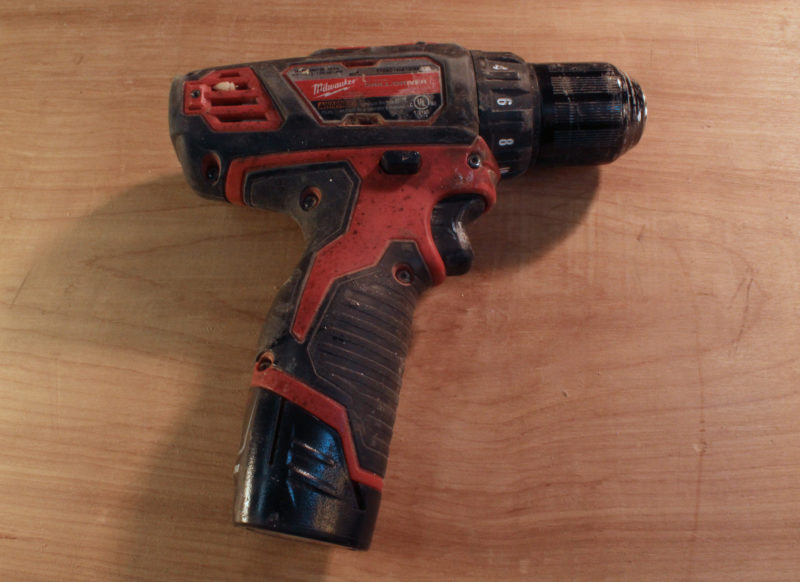
My drill is beginning to take on a patina of glue and paint but is none the worse for wear after a year of hard use.
I hated giving up on my Makita cordless drill after it had served me so well for over 25 years. I bought it in 1989 when I was doing exhibit installations in museums, and it quickly became the most frequently used tool in my home shop. I’ve used other cordless drills but always preferred the Makita because its batteries were housed in the grip, rather than in a clunky box clipped on the end. My trusty Makita was bright blue when I bought it; it’s now brown, covered with epoxy after countless boatbuilding projects. It never stopped working, but the batteries for it eventually became obsolete and too expensive to replace.
I was reluctant to put my trust in a new and different cordless drill, but I switched brands and bought a Milwaukee cordless 3/8″ M12 drill/driver (as a kit, Model 2407-22). The grip is ergonomically designed and as pleasant to hold as the beautifully sculpted handles on my ancient Disston handsaws. It wraps around the web between my thumb and index finger and fills the hollow of my palm. The forward-and-reverse switch is located right between thumb and forefinger and operable without shifting my hand. On the top of the M12 there’s a switch with two settings: 1 for high-torque and 2 for high-speed. The variable-speed trigger is quite sensitive, especially in the high-torque mode, so I can easily line up driver bits with the slots in screw heads; there’s a 20-step clutch that prevents tearing up screw heads and spinning screws in soft wood. The chuck is keyless and provides a tight non-slip grip even on round drill bits.
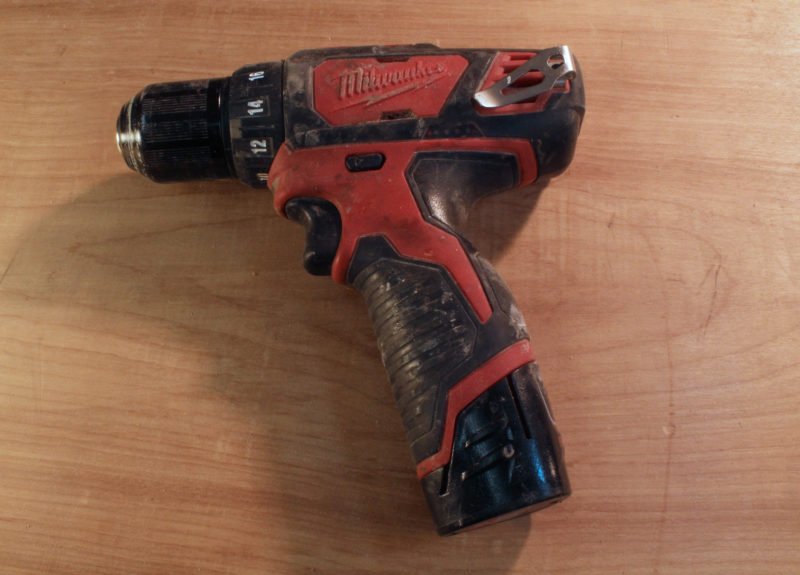
The only quibble I had with the Milwaukee was the belt clip is too stiff and too tight against the drill body to slip over the edge of a belt.
The Milwaukee’s 12-volt lithium-ion battery is so small that it extends just 1/2″ below my hand when it’s plugged into the grip. You’d hardly know it was there. In spite of its compact size, the battery has enough oomph to deliver 275 inch-pounds of torque, almost three times the 104 inch-pounds of my Makita. The M12 will push a 1 3/8″ Forstner bit through pine or a slightly dull 7/8″ Forstner through locust. It can also drive a 4″ exterior screw all the way into a 4×4 and bury its head without hesitation.
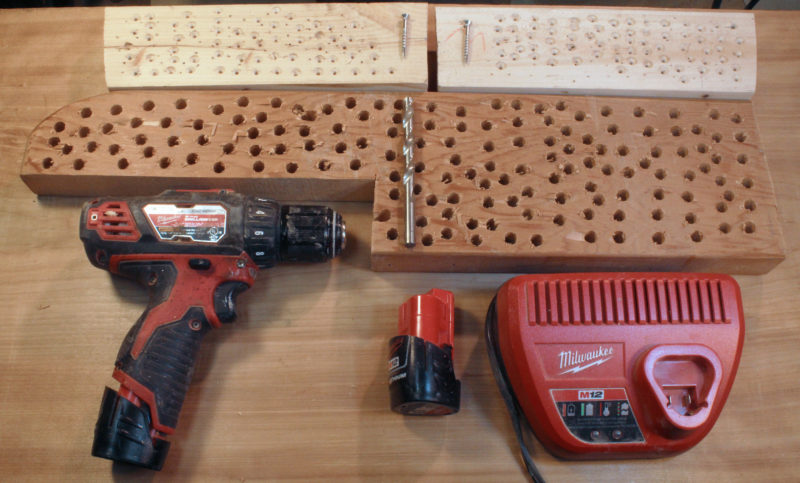
To see what the drill could do to 1/2″ stock on a single charge, I drilled 151 3/8″ holes with the first fully charged battery and with the second drove deck screws in and backed them out 143 times.
The battery is rated at 1.5 amp-hours, whatever that means. To put amp-hours into terms I could understand, I drilled some 3/8″ holes through 1 1/2″ Douglas-fir using the high-speed setting. I did 151 holes, one right after the other, before the fully charged battery pooped out. With the drill switched to high-torque and the drill’s second battery ready to go, I then drove a 1 5/8″ square-drive stainless-steel deck screw through a 2×4 and backed it out 143 times before that battery ran out. The charger included with the kit brought the batteries back up to full charge in less than 35 minutes, much less time than it takes me to deplete one in ordinary use.
The drill has some nice bells and whistles. There’s a built-in LED headlight to illuminate the work. The chuck casts a shadow, but any drill or driver bit longer than 2″ will have illumination at its tip. The light goes on when you pull the trigger partway, stays on while the drill is running, and turns itself off 10 seconds after the trigger is released. There’s an audible tone that sounds after the light goes on and just before the motor begins to turn, not a bad idea if you need to get a bit properly set in a straight-slotted, easily damaged brass screw before driving it. There are four red lights on the left side of the drill that indicate the level of charge remaining in the battery. And the drill is balanced so it will stand up on the flat end of the battery. While it’s not as steady as a cordless drill with its feet cemented into a bulky battery box, I thought it was a good indication that the Milwaukee designers thought of everything. The Milwaukee drill/driver’s light weight and compact size belie its power and endurance, and make it well suited to working in the narrow angles and tight spaces of small boats and to taking on bigger jobs around the house.![]()
Milwaukee tools are widely available at hardware and home-improvement stores. The company web site provides a finder for stores and online vendors.
Christopher Cunningham is the editor of Small Boats Monthly.
Is there a product that might be useful for boatbuilding, cruising or shore-side camping that you’d like us to review? Please email your suggestions.
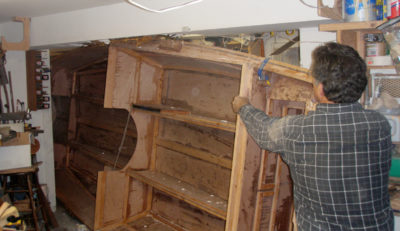
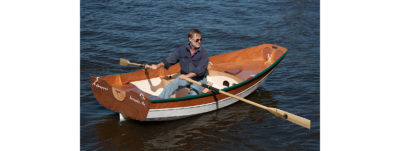


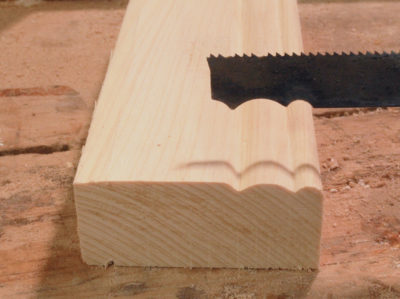
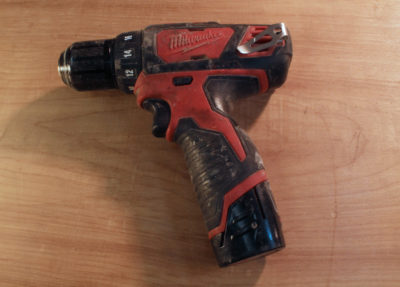
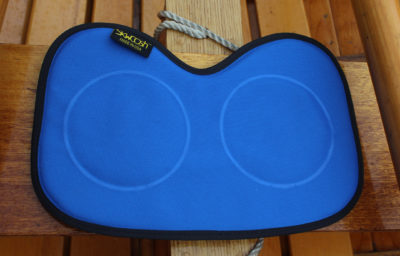
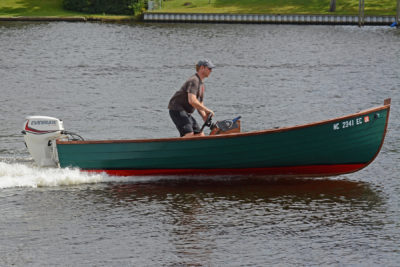
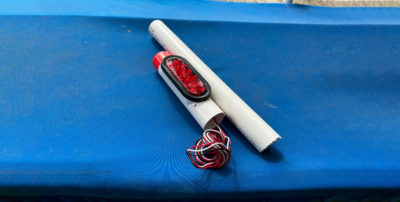
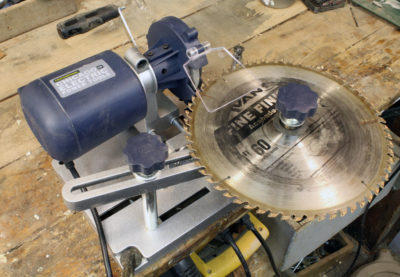
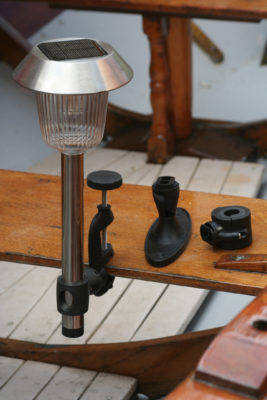
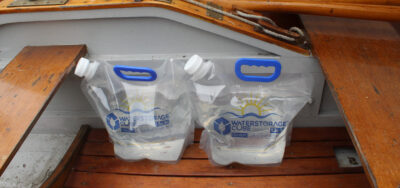
We use them at CBB, Community Boat Building. They are a perfect size for the small hands of young people. They also are very durable and reliable.
I appreciate the experimental data, well done—I’m convinced. Someone brought one of these along on a Texas 200 cruise, and I do believe it was in frequent use among many of us making small repairs.
With lithium-ion batteries, think of amp hours like a gas tank size. So a 3 Ah battery lasts twice as long as a 1.5 Ah battery. In fact, a 3 Ah battery is just two 1.5 Ah batteries and as soon as one of those batteries is depleted, it automatically switches to the next.
For driving screws I much prefer an impact driver, and, by the way, I’m guessing that that screw got a little warm after just a few drives!
Your gas-tank analogy is a good one and to take it a step further, knowing how many miles per gallon the vehicle gets is the key to how far it will go on a full tank. By expressing amp hours in terms of holes drilled and screws driven I could better understand the amount of work the drill could do on a fully charged battery.
There are new models of Milwaukee drill/drivers that have an impact-driver setting. I found that the clutch had a similar effect. When the clutch starts to slip it “taps” the drive bit. If I set the clutch at a setting appropriate for the job I could drive the screw and have the clutch start to slip as the screw head came home. I can then watch the screw head turn a few degrees at a time. I’ve been doing a lot of painting at home and for replacing window hardware with brass screws, the clutch quickens the work considerably.
And yes, the wood screws got quite hot during the endurance test.
The drill driver is what I like for certain screws and jobs. But the impact driver is what I use most of the time, especially when I am driving lots of larger screws. I use 18V, so it’s quite peppy and I can zip 3″ screws in quickly and effortlessly. It didn’t take me long after I got mine to realize that I could make temporary (or not) things like boat or tool stands from 2x4s, and once I was done I could take all those screws back out and reuse them later for other things. I keep several sizes of Robertson square-drive screws handy for just such projects. Of course, one could do the same thing with the drill/driver but for those jobs the impact driver makes a big difference when it comes to zipping in many long screws.
I prefer the Makita 10.2 V cordless tools. They are basically they are the same tool in a slightly more streamlined body. Makita an Milwaukee are brands owned by the same company. The Makia being slightly smaller and easier to fit in small holes.
As an airplane mechanic, i spend much of my time opening and closing panels, held on with many screws. I use the impact to remove and the clutched drill to install.
The endurance of the lithium batteries is incredible, even in brutal cold. Don’t let the lower rating of the Makita voltage confuse you. While the batteries read 12V off the charger, once in use, all brands’ battery voltages drop to a working voltage in the 10-volt range. Makita was just the only one to be honest in their labeling.